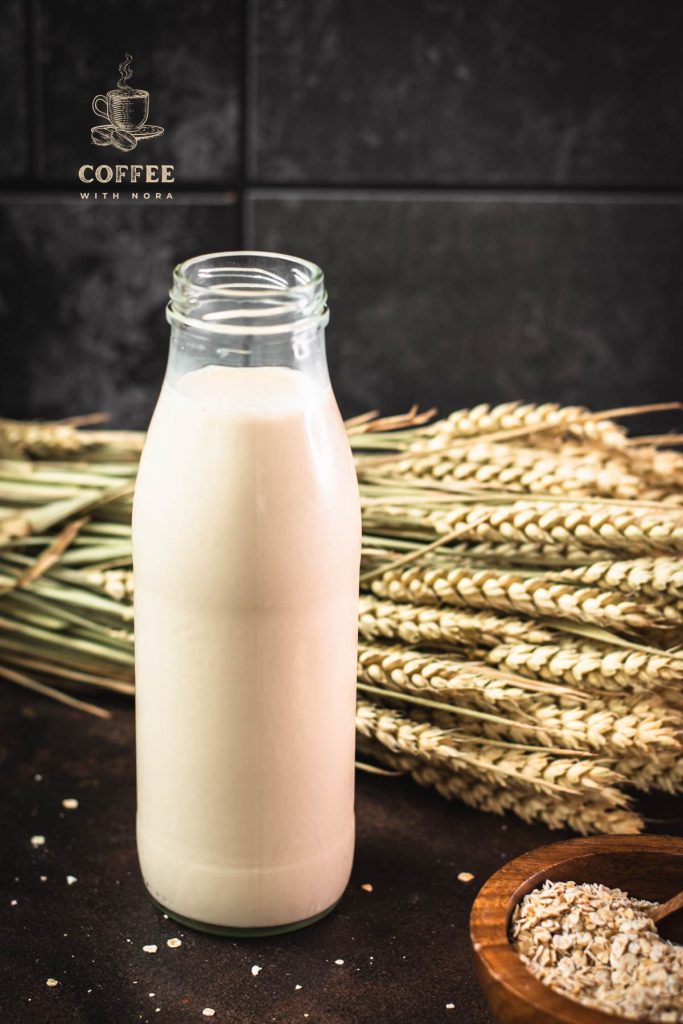Plant-based milk has evolved into a vast world of delicious options; few are as rich as oat milk! It’s creamy and wonderful in baking, cereal, and even coffee, but why does amazing oat milk separate in coffee?

There are so many reasons to use dairy alternatives in your morning coffee, and few of those non-dairy options are getting as much buzz as oat milk.
This tasty alternative milk can make all the difference in your beverage game, but why does it always seem to separate in coffee?
Explore the science behind this chemical reaction in your cup and find out how to fight it with this closer look at oat milk and coffee.
What is Oat Milk, and Why Use it in Coffee?
Oat milk is a delicious alternative to traditional dairy milk. It is made by washing oats in water to draw out the plant’s pulp and nutrients. It has become very popular nationwide because it is nut-free, creamy, and delicious.
Oat milk can be an excellent alternative to dairy for anyone! It is rich in vitamins, calcium, and dietary fiber so there are many potential health benefits to including this non-dairy milk in your coffee routine. Plus, unlike dairy milk, oat milk is cholesterol-free!
It’s not just the health benefits that make many people reach for the oat milk at coffee time and one sip shows why! The flavor of this dairy alternative is extraordinary. It’s mildly toasty, sweet, and earthy while still being creamy and smooth. Today you can find oat milk in plain, sweetened, vanilla, extra-creamy, and even more, varieties so you can have the perfect match for your favorite coffee brew!
Oat milk has such a nice creamy texture and a mildly oaty taste that it perfectly matches coffee. The velvety milk smooths the robust coffee flavor in the best way, but when oat milk splits in your coffee it can ruin the whole experience.
Explore why this beverage phenomenon happens and what you can do to avoid it so you can still enjoy smooth and delicious oat milk coffee creations.
Why Does Oat Milk Curdle in Coffee?
There is nothing worse than pouring your favorite oat milk into a hot cup of coffee only to see the oat milk curdle. It’s a sure way to start your day on a sour note, but why does this reaction happen?
The reason oat milk separates in coffee is actually a very simple kitchen reaction. While great coffee has a balanced flavor, it is still a very acidic drink. This acidic nature is the culprit behind the big oat milk split.
The acid in coffee reacts with the oat milk, making the plant-based milk’s pH drop. This causes the oat milk to separate or curdle. You can always see when this has happened to your drink because the oat milk might appear lumpy and thin simultaneously.
In general, acid can cause milk to curdle. This chemical reaction might seem familiar if you have ever whipped up a quick homemade buttermilk. What’s happening in your coffee mug is similar to when you add an acid to milk to make homemade buttermilk.
However, acid is not the only factor that can cause curdling. Oat milk separates more easily in hot coffee. When oat milk is heated too rapidly or reaches too high of a temperature, it can curdle.

How to Avoid Separating Oat Milk in Coffee?
If you love oat milk and coffee, despair is unnecessary! You can avoid curdled oat milk with a few simple tricks and have a deliciously smooth coffee treat!
To make a delicious oat milk-infused coffee, you must consider a few factors. Here are a few tricks to preparing a perfectly smooth and delectable coffee with oat milk and no lumps:
- Coffee Type – If you have this problem often, consider changing your coffee. Your current brew might be very high in acid, and this doesn’t just take a toll on your milk, but too much acid can negatively affect your health over time. Try swapping to a lower-acid coffee, like dark roast or espresso. You can also seek out “low acid” coffee which is made with special blends of lower acidity coffee beans.
- Oat Milk Brand – Some oat milk brands are superior to others in coffee making. Seek out a plant-based milk that is labeled “barista quality” to get the best texture and flavor out of your brew. These types of oat milk are designed for use in cafes and have a more stable texture that allows them to withstand some temperature fluctuation.
- Timing – For many, topping your coffee off with some milk is just natural, but what if that’s all backward? One simple trick to avoiding lumps in your coffee is adding the oat milk to the cup before the coffee and then slowly pouring the coffee into the milk.
- Coffee Temperature – Oat milk curdles more easily in hot coffee than in cold. If you’re enjoying hot coffee with oat milk, add the coffee to the plant-based milk little by little and stir well. You can also consider switching to cold-brew coffee. Cold brews have less acid by nature thanks to their slow-brewed quality.
- Oat Milk Temperature – One way to avoid splitting the milk is by using room-temperature oat milk to start with. If you buy shelf-stable oat milk, you can use it straight out of the pantry when you first open it. After it’s been in the fridge, consider leaving the oat milk on the counter for up to 1 hour before combining it with your favorite coffee.
Overall, when trying to avoid lumps, remember acidity and temperature! Seek out lower acid options and control the temperature of the milk as much as possible to make a deliciously smooth oat milk coffee!


